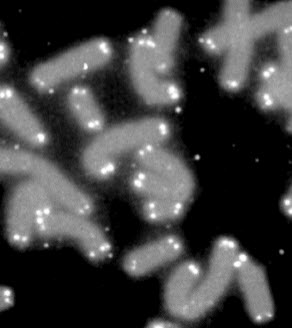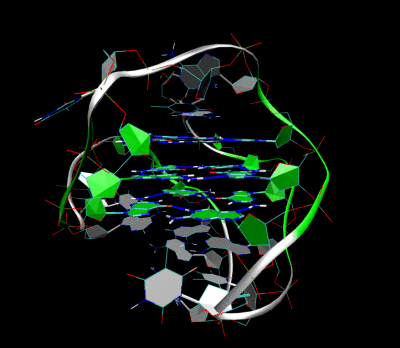On/off switch for aging cells discovered, may hold the key to ‘healthy aging’
Flipping on the telomerase switch to restore telomeres
September 23, 2014

Human chromosomes (gray) capped by telomeres (white) (credit: Wikimedia Commons)
Scientists at the Salk Institute have discovered an on-and-off “switch” in cells that points to a way to encourage healthy cells to keep dividing and generating, for example, new lung or liver tissue — even in old age — and may hold the key to healthy aging.
In our bodies, newly divided cells constantly replenish lungs, skin, liver and other organs. However, most human cells cannot divide indefinitely — with each division, a telomere (a cellular timekeeper at the ends of chromosomes) shortens.
When this timekeeper becomes too short, cells can no longer divide, causing organs and tissues to degenerate, as often happens in old age.
But there is a way around this countdown: some cells produce an enzyme called telomerase, which rebuilds telomeres and allows cells to divide indefinitely.
Turning back on the telomerase switch

Three-dimensional representation of the molecular structure of a telomere (credit: Wikimedia Commons)
However, in a new study published September 19 in the journal Genes and Development, scientists at the Salk Institute have discovered that telomerase, even when present, can be turned off.
“Previous studies had suggested that once assembled, telomerase is available whenever it is needed,” says senior author Vicki Lundblad, professor and holder of Salk’s Ralph S. and Becky O’Connor Chair. “We were surprised to discover instead that telomerase has what is in essence an ‘off’ switch, whereby it disassembles.”
Understanding how this “off” switch can be manipulated, thereby slowing down the telomere shortening process, could lead to treatments for diseases of aging (for example, regenerating vital organs later in life).
No comments:
Post a Comment